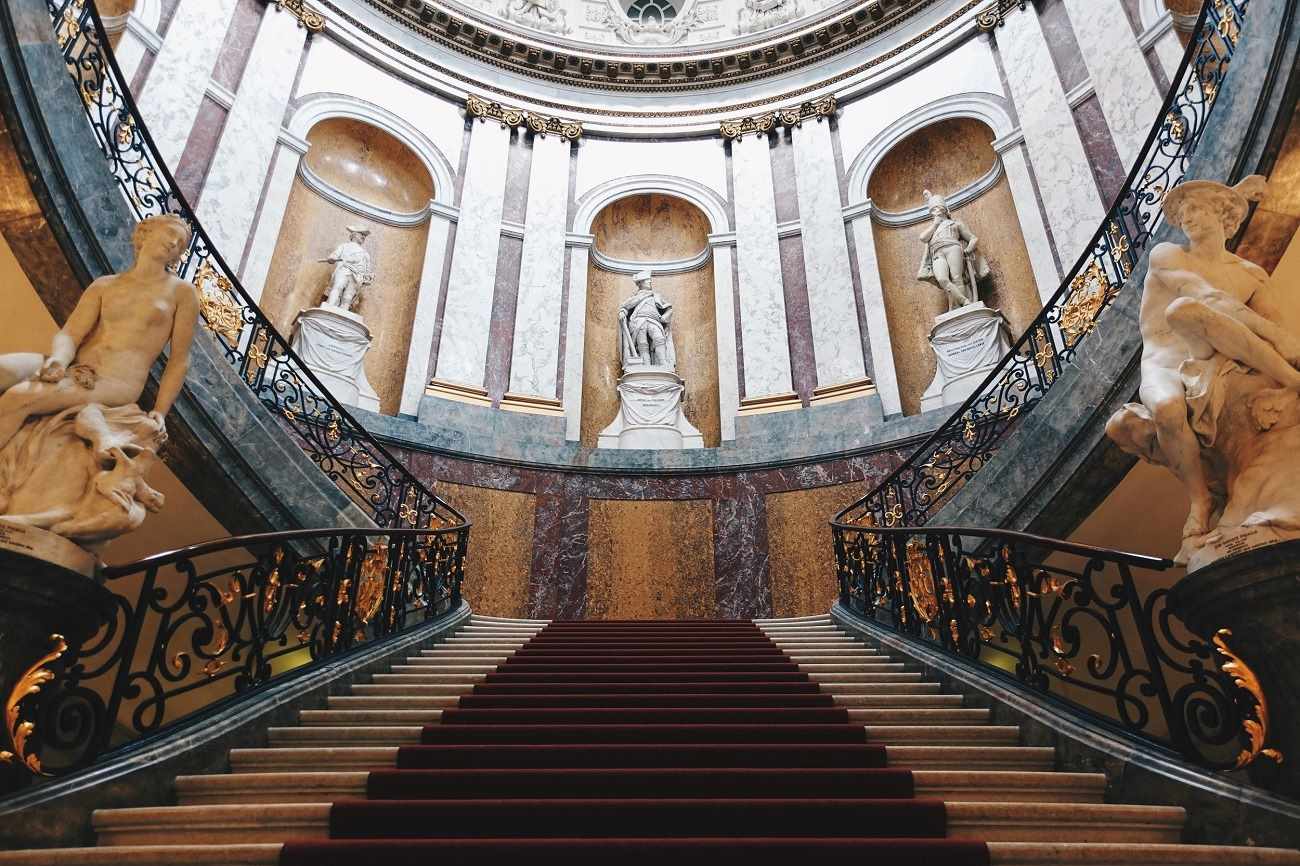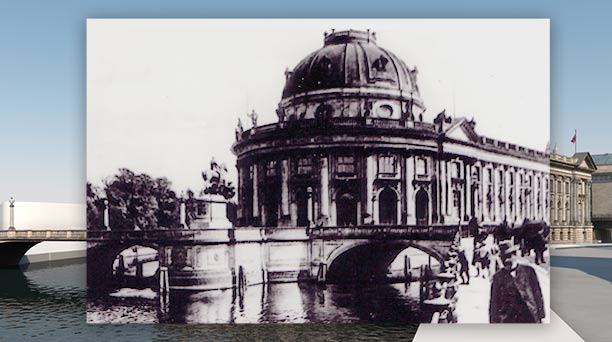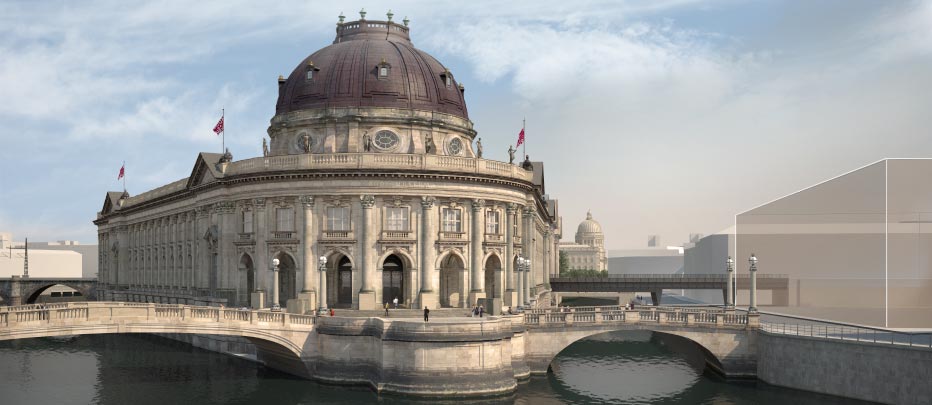The Bode Museum, a magnificent structure nestled on the northern tip of Museum Island in Berlin, Germany, stands as a testament to the grandeur and artistic richness of the Baroque era. Completed in 1904, the museum is named after its first curator, Wilhelm von Bode, a renowned art historian whose vision was to create a space where art from various epochs and cultures could be displayed in harmony. The Bode Museum’s architectural style, characterized by its Baroque elements, intricately detailed façade, and opulent interior, serves as a fitting backdrop for its diverse collection of sculptures, Byzantine art, and numismatic treasures.
Architectural Splendor
The Bode Museum’s architectural design is a blend of Baroque and Renaissance Revival styles, conceived by architect Ernst von Ihne. Its exterior features a majestic dome that rises above the River Spree, commanding attention with its elaborate detailing and harmonious proportions. The façade is adorned with sculptures and ornamental motifs, showcasing the craftsmanship typical of the Baroque period.
One of the most striking features of the museum is its central rotunda, crowned by the dome, which serves as the focal point of the building. The rotunda’s interior is decorated with intricate stuccowork and frescoes, creating a sense of grandeur and awe as visitors enter the space. The design of the rotunda reflects the Baroque ideals of drama and movement, with light streaming through windows and illuminating the artworks displayed below.
Inside, the museum’s galleries are designed to enhance the visitor’s experience of the art. The rooms are adorned with rich wood paneling, marble floors, and vaulted ceilings, evoking a sense of opulence and sophistication reminiscent of the Baroque era. Each gallery is carefully curated to showcase a specific collection or theme, allowing visitors to immerse themselves in the artistic and cultural history of Europe and beyond.
Collections and Treasures
The Bode Museum is renowned for its diverse collections, which span centuries and continents. One of its most celebrated collections is its sculpture collection, which includes works ranging from the Middle Ages to the 18th century. Sculptures by artists such as Donatello, Tilman Riemenschneider, and Antonio Canova are displayed alongside Baroque masterpieces, showcasing the evolution of sculptural techniques and styles over time.
Another highlight of the museum is its collection of Byzantine art, considered one of the most comprehensive outside of Istanbul. Icons, mosaics, and religious artifacts from the Byzantine Empire are meticulously displayed, offering insights into the spiritual and artistic traditions of the Eastern Mediterranean.
The Bode Museum is also home to a renowned collection of coins and medals, reflecting the economic, political, and cultural history of Europe. Spanning ancient to modern times, the numismatic collection includes rare coins, medals commemorating historical events, and examples of currency from different periods and regions.

Cultural Significance
Beyond its architectural and artistic treasures, the Bode Museum holds cultural significance as a symbol of Berlin’s rich cultural heritage and its enduring commitment to the arts. Since its inception, the museum has played a vital role in preserving and promoting cultural heritage through its exhibitions, educational programs, and scholarly research.
The museum’s location on Museum Island, a UNESCO World Heritage site, underscores its importance as a cultural hub in the heart of Berlin. Surrounded by other prestigious museums and cultural institutions, the Bode Museum forms part of a cohesive ensemble that attracts visitors from around the world who come to explore its collections and experience its architectural splendor.

Conservation and Preservation
The Bode Museum’s commitment to conservation and preservation is evident in its meticulous care of its collections and historic building. Conservation efforts ensure that artworks and artifacts are safeguarded for future generations, while restoration projects maintain the integrity of the museum’s architectural heritage.
Recent initiatives have focused on enhancing the museum’s accessibility and visitor experience, with improvements made to exhibition spaces, visitor facilities, and educational programs. These efforts aim to ensure that the Bode Museum remains a dynamic and engaging cultural institution for years to come.
Visitor Experience and Community Engagement
Visiting the Bode Museum is a journey through time and space, offering visitors a glimpse into the artistic achievements of civilizations past and present. Whether exploring the intricate details of a Renaissance sculpture, marveling at the shimmering gold of a Byzantine icon, or studying the delicate engravings on a medieval coin, visitors are invited to engage with history and culture in a meaningful way.
The museum’s educational programs and guided tours provide opportunities for deeper exploration and learning, catering to audiences of all ages and backgrounds. Special exhibitions, lectures, and cultural events further enrich the visitor experience, fostering dialogue and exchange among scholars, artists, and the public.

Conclusion
In conclusion, the Bode Museum stands as a beacon of artistic excellence and cultural heritage, embodying the splendor and diversity of the Baroque era. From its opulent architecture and richly decorated interiors to its unparalleled collections of sculpture, Byzantine art, and numismatic treasures, the museum offers a window into the past while inspiring present-day appreciation for the arts.
As a cultural institution located in the heart of Berlin, the Bode Museum continues to captivate and educate visitors from around the globe, inviting them to explore the beauty and complexity of human creativity across time and space. Its enduring legacy as a custodian of cultural heritage underscores its importance in the global landscape of museums and underscores its relevance in fostering cross-cultural dialogue and understanding.





